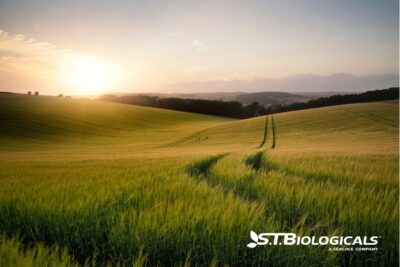It may be a year with lots of surprises. As the saying goes, change is the only constant, and that seems to be relevant for the coming agriculture season. The outlook for 2025 depends on which agri-business experts you listen to. Here are a few trends that are being watched.
The Dramatic Increase in Productivity Continues
The increased productivity we’ve experienced the last few years is expected to continue, though slower than before 2020. Precision ag technology, such as GPS-guided equipment, drones, and real-time data analytics helps farmers optimize inputs. This leads to timely harvests and increased yields.
The downside to this is that more marginal land is now in cultivation. Ostensibly, this land has been used to meet growing global food demand. But marginal land (land that is less fertile, hilly, or wet) comes with challenges for a farmer. With higher inputs, yields are average, but the environmental impact is much greater. The nutritional quality of food grown with high synthetic inputs tends to be much lower than that of regenerative production.
Sustainable and regenerative farming practices are being promoted to reverse the damage done to these lands. The NRCS has several programs that offer financial and technical assistance to help landowners implement practices to improve the health of marginal lands.
As long as yield is the only metric, this will be a continuing trend. But even the USDA has acknowledged that agriculture has to look at more than just bushels/acre. The environmental impact is becoming a greater factor.
Adding the Environment into the Profit Equation
There is a growing trend to include environmental factors in the profit equation. Several factors fuel this.
- Consumer Demand: Consumers are increasingly demanding sustainably produced food. Companies adapt to market demands and are adopting climate-friendly practices to meet those demands.
- Regulatory Pressure: Stricter regulations put pressure on farmers and ranchers to pay attention to nutrient runoff. Monitoring the proper use of insecticides and pesticides helps endangered bird and insect species. There have been recent rulings that require the USDA to regulate gene-edited crops more closely.
- Technological Advancements: Advanced technologies have increased yield, and now, emerging technologies are being used to decrease the negative impact on the environment of agricultural practices. Precision ag technology can measure and decrease environmental impact as well as measure yield.
- Corporate Responsibility: Sustainability goals set by large corporations trickle down to the producer as specifications within a grower or producer’s contract. Corporate responsibility is an attempt to meet consumer demand.
- Economic Benefits: More ag professionals are learning they can make greater profits using sustainable and regenerative practices. Not only in the long-term, but studies show in the short term a decrease in productivity isn’t inevitable, and an increase in profit almost always is.
The shift to sustainable and regenerative ag practices and integrating environmental considerations into the ag profit margin is accelerating.
Ag Growth in the Global South
The US ag industry faces growing competition from Africa, Latin America, and Asia. For many ag operators, this means greater export opportunities and a more diverse supply chain.
How expansive the export market will be in 2025 remains to be seen. However, one thing is for certain: growing ag industries positively impact economies in the Global South, but their methods are not sustainable. Many of the same practices our ancestors practiced, such as clear-cutting forests, intensively farming prairies, and over-extracting water, are being used in other parts of the world.
The US Agricultural Outlook for 2025
The agricultural outlook for 2025 isn’t a rosy picture. We haven’t turned the corner on climate change, and we feel we can predict with a degree of certainty that extreme weather events will impact plantings and harvests. When over 90 percent of agricultural land is still managed conventionally, we are far from sustainable.
The percentage of ag land that is used sustainably is far less than 1 percent. Organic acreage in the US only accounted for 0.5 percent of all ag land in 2024. Incorporating some regenerative practices will help your farm be more resilient in the face of natural and man-made crises. But true resilience in 2025 will come with the adoption of regenerative ag practices over a much larger percentage of ag acres.
If the US agriculture industry can remain agile and adapt to changing markets by adopting new technologies, we have some good opportunities. But that may mean looking at different crops—and different, more regenerative ag practices—in the very near future.
Consumer demand and corporate responses will end up driving regenerative practices. Is 2025 the year you convert some acres to regen and compare profits, productivity, and environmental impact? Our team at STBiologicals.com is here to help you sort out what will work on your farm to achieve profitability in the shortest amount of time, perhaps in a year. Contact us. We’re here to help you succeed. When soil speaks, we listen.

